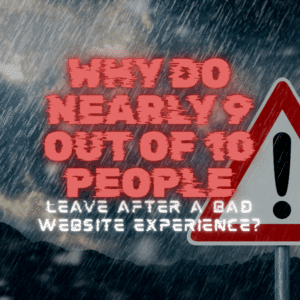Why you can trust Sunlight Media
- Expertise and Experience:Our content is crafted by seasoned professionals with extensive experience in digital marketing, ensuring you receive accurate and actionable advice.
- Unbiased Information:We provide impartial insights and recommendations based solely on what's best for your business, without any hidden agendas or promotions.
- Thorough Research:Our articles are backed by comprehensive research and the latest industry trends, ensuring you stay informed with reliable and up-to-date information.
- Transparency and Honesty:We believe in complete transparency. We disclose our sources, methodologies, and any potential conflicts of interest, so you can trust the integrity of our content.
- Continuous Improvement:We constantly review and update our content to reflect the latest developments in digital marketing, so you always have access to the most current and relevant information.

As we navigate through an era marked by swift technological advancements and unpredictable events, businesses face a myriad of threats in business that can disrupt operations and impact profitability. Understanding these threats and implementing effective strategies to manage them is not just beneficial; it’s a survival necessity.
Key Takeaways
- Recognize and assess risks with a SWOT analysis to develop crisis management plans.
- Implement strategies such as diversifying supply chains, fostering employee engagement & well-being, cybersecurity education & strong password policies to mitigate business threats.
- Leverage data analytics, automation & adaptability for successful risk management that leads to improved efficiency and competitiveness.
Understanding Business Threats: Recognizing and Assessing the Risks

The initial approach to manage business threats lies in comprehending them. A SWOT analysis, a strategic tool used to evaluate a business’s strengths, weaknesses, opportunities, and threats, can serve as an invaluable asset in recognizing these risks. Collaborating with a team to identify these elements, businesses can shape their strategic decisions, keep pace with market trends, and foster growth opportunities.
Internal factors, such as employee turnover, operational inefficiencies, and financial mismanagement, are some of the prevalent risks that can significantly impact a business. External risks, on the other hand, encompass market requirement shifts, supply-chain issues, and talent shortages. Both internal and external factors, when not effectively managed, can jeopardize the stability and growth of a business.
The SWOT analysis, while instrumental, has its limitations, such as the absence of prioritization for each point within the categories and the inability to consider the weight of different factors. Hence, to ascend as the market leader, businesses should supplement this analysis with additional strategies, such as a crisis management plan to tackle threats as they emerge.
Internal Factors
High employee turnover, operational inefficiencies, and financial mismanagement are typical internal factors contributing to business risk. Some specific examples of these factors include:
- Poor compensation
- Overwork
- Scarcity of career development opportunities
- A toxic work culture
In addition to these internal factors, other risks may also impact a company’s overall business risk.
These factors can trigger high employee turnover, thereby impacting operational efficiencies and contributing to rising costs.
Operational inefficiencies can threaten businesses by hampering performance, increasing operational costs, extending lead times, and reducing profitability. Additionally, they can have adverse effects on morale, employee productivity, operational complexity, and overall efficiency. Cold weather, for instance, can contribute to operational inefficiencies by causing delays in transportation, supply chain disruptions, and increased energy costs.
External Factors
External factors in a SWOT analysis, also known as the external environment, include elements such as monetary policies, market changes, and access to suppliers. These factors can lead to market fluctuations, regulatory changes, and susceptibility to natural disasters. An inability to navigate these external factors effectively can result in significant threats to businesses.
To effectively neutralize these external threats, businesses should regularly evaluate the market landscape to discern patterns and refine their offerings to cater to diverse consumer needs. Furthermore, businesses can effectively manage compliance risks and adapt to regulatory changes by seeking expert guidance and implementing checklists to assess their operations in alignment with compliance standards.
Top Business Threats in the Current Landscape

The panorama of business threats perpetually evolves, with cybersecurity attacks, supply chain disruptions, and workforce challenges at the forefront. In 2021, businesses encountered heightened social engineering attacks, malware, ransomware, mobile security attacks, and remote working risks. Over the last decade, cybersecurity threats have undergone significant evolution, with hackers employing more advanced techniques and the proliferation of digitized data creating more avenues for cybercriminals.
The instances of cybersecurity attacks on businesses cannot be ignored. The Microsoft Exchange email attack, which impacted over 30,000 US businesses, and numerous other data breaches that have affected millions of users, underscore the significance and widespread impact of cyber threats in today’s business environment. Thus, businesses must invest in robust cybersecurity measures to maintain a strong market position.
Besides cybersecurity risks, present-day businesses also confront unparalleled challenges in their supply chains and workforce. The COVID-19 pandemic has caused severe disruptions in supply chains, leading to shortages, delays, and increased costs. Furthermore, the phenomenon of the Great Resignation has seen a significant number of employees choosing to leave their positions, thereby posing workforce challenges.
Cybersecurity Attacks
Businesses increasingly worry about cybersecurity attacks. Some common types of attacks include:
- Malware attacks
- Phishing attacks
- Man-in-the-middle attacks (MITM)
- Distributed denial-of-service (DDoS) attacks
- SQL injection attacks
The prevalence and sophistication of these threats, especially during the global pandemic, are on the rise, making it crucial to stay up to date.
Extreme weather events can also pose risks to business operations, as they can lead to disruptions in operations, supply chain issues, and damage to infrastructure.
These cybersecurity attacks can inflict substantial financial damage on businesses through the loss of funds or data, data corruption, disrupted operations, and the accrual of financial and reputational costs. Instances of cybersecurity attacks on businesses, such as the SolarWinds ransomware attack and the Yahoo data breach, highlight the importance of staying informed about market demand and trends, as well as investing in robust cybersecurity measures.
The hard truth is that no system, network or device can be considered safe. Attackers are using new attack methods every other day. The best way to keep these malicious attacks at bay is to remain alert.
Supply Chain Disruptions
Global events like the COVID-19 pandemic fuel supply chain disruptions, which can result in reduced revenue and profitability, damage to brand reputation, and customer dissatisfaction. Events like these have resulted in increased costs and higher inventory obsolescence for companies such as Kellogg’s, Nike, and HP.
Businesses can mitigate supply chain disruptions through various strategies. These include:
- Identifying and assessing risks
- Leveraging digital monitoring and data analytics tools
- Diversifying suppliers
- Building backup inventory
- Establishing strong relationships with suppliers
Workforce Challenges
The Great Resignation phenomenon has led to heightened turnover rates, recruitment obstacles, and opposition to returning to the workplace. Employees are seeking reduced hours, greater flexibility, and alignment with company values. Inadequate compensation, limited prospects for career progression, and a toxic organizational culture are some of the primary factors contributing to the Great Resignation.
Talent shortages can have a significant impact on business productivity and growth, including:
- Decreased revenue
- Potential closure of small businesses
- Difficulties in filling open roles
- Challenges in retaining quality teams as employees seek better opportunities elsewhere.
Strategies for Managing and Mitigating Business Threats

The threats facing businesses today are diverse and complex, but there are strategies that can help manage and mitigate these security risks. Businesses must implement strong security measures and should consider investing in managed threat intelligence services to protect against potential cybersecurity threats that could lead to data breaches, financial losses, and damage to the company’s reputation.
In addition to security measures, diversifying supply chains and fostering employee engagement and well-being are also vital strategies in managing business threats. Diversification helps to minimize the risk of supply chain disruptions, while employee engagement and well-being can help attract and retain top talent, ultimately bolstering business resilience.
However, strategies alone are not enough. They need to be implemented effectively to truly mitigate business threats. This could involve:
- Educating staff about cybersecurity
- Establishing internal controls
- Conducting risk assessments
- Enforcing strong password policies
- Updating software and systems
- Providing regular security training
Implementing Robust Security Measures
With the escalation of cybersecurity threats, the implementation of robust security measures goes beyond being a precaution; it becomes a necessity. Businesses can implement measures such as:
- Providing cybersecurity education for staff
- Establishing internal controls
- Conducting risk assessments
- Enforcing strong password policies
- Updating software and systems
- Providing regular security training
Firewalls and encryption are technical security measures that play a crucial role in enhancing business security. Firewalls safeguard against external cyber threats, unauthorized network connections, and unauthorized access to sensitive data. Encryption guarantees the confidentiality, integrity, and authenticity of business data, thus shielding it from unauthorized access and minimizing the repercussions of data breaches.
Diversifying Supply Chains
Supply chain diversification entails:
- Expanding the range of suppliers and locations with which a company collaborates
- Reducing dependence on a single source
- Mitigating risks
- Developing new competencies
- Establishing relationships with numerous suppliers or locations to guarantee a consistent and robust supply of goods or services.
A business can effectively diversify its supply chain by:
- Identifying and engaging with multiple suppliers or locations
- Cutting across multiple geographies
- Securing critical supplies through diversification
- Having several sources for each part of the supply chain
This strategy not only helps to mitigate the risk of supply chain disruptions but also fosters resilience in the face of unpredictable market changes.
Fostering Employee Engagement and Well-Being
Promoting employee engagement and well-being involves:
- Ensuring clear communication of the company’s vision
- Encouraging employee involvement in decision-making
- Fostering meaningful connections
- Providing professional development opportunities
- Creating a collaborative work environment
- Offering unique benefits to support their welfare
By implementing these strategies, local businesses can cultivate a sense of engagement and well-being among their employees.
Employee engagement and well-being have a significant impact on mitigating business threats by fostering a positive work environment and promoting open communication. It enhances preparedness for future disruptions and cultivates a culture of growth and innovation. Furthermore, resilient leaders can proactively harness change to propel business expansion.
In summary, resilience is essential for enduring adversity and upholding resilience in challenging situations.
The Role of Technology in Addressing Business Threats

Technology assumes a key role in tackling business threats. From data analytics that facilitate the identification, analysis, and monitoring of risks to automation that ensures compliance and prevents cyber breaches, technology is a powerful tool in the hands of businesses.
Emerging technologies provide several benefits, including:
- Enhancing the manageability of risk management projects
- Offering support in risk processes
- Facilitating collaboration between technology risk and strategic planning
- Fostering competitive advantages
These technologies not only help businesses address threats but also empower them to anticipate potential challenges and devise proactive strategies to mitigate them.
Furthermore, technology assists businesses in combating cybersecurity threats by enforcing robust cybersecurity measures like firewalls, encryption, and multi-factor authentication. By deploying security infrastructure like cameras, detectors, and alarms, businesses can identify and respond to potential digital threats effectively.
Leveraging Data Analytics
Data analytics can revolutionize the prediction and mitigation of business threats. By analyzing historical data, trends, and patterns, businesses can:
- Identify potential risks
- Assess and quantify these risks to prioritize response efforts
- Facilitate real-time monitoring of risk factors for faster adaptation and response
Thus, data analytics play a crucial role in enhancing decision-making and optimizing risk management strategies.
Organizations frequently utilize a range of data analytics tools for risk assessment, such as:
- Risk Management Software
- Data Visualization Tools
- Predictive Analytics Tools
- Machine Learning Algorithms
- Statistical Analysis Tools
These tools aid businesses in effectively assessing and managing potential risks, enabling them to extract more value from their data and make more informed decisions.
Adopting Automation
In the context of businesses, automation has transcended from being an option to a strategic necessity. Business process automation (BPA) refers to the use of software to automate repetitive tasks and optimize business processes. It aims to reduce human involvement, improve efficiency, and minimize errors, thus helping businesses better manage threats and maintain a competitive edge.
Automation can result in a range of benefits, such as:
- Increased profitability
- Accountability
- Productivity
- Flexibility
- Reduced human errors
- Improved employee satisfaction and engagement
- Improved work environment
- Increased efficiency
- Lower operational costs
- Enhanced productivity
- Consistency
By automating repetitive tasks, processing data more accurately, speeding up processes, removing reliance on human judgment, and reducing the number of touches in warehouse processes, automation can mitigate human error in business processes.
Integrating Financial Tools for Operational Stability
Beyond cybersecurity and workforce challenges, businesses must also maintain consistent administrative operations, especially in payroll management. A reliable paystub generator can streamline payroll processes, reduce manual errors, and ensure accurate documentation for employees and audits alike. In times of crisis or transition, automating such tasks not only saves time but also reinforces financial transparency and compliance—key elements in navigating uncertain environments with resilience.
The Importance of Adaptability and Resilience in Business
Given the evolving business threats, adaptability and resilience transcend beyond mere buzzwords; they are critical characteristics that can shape a business’s success. Adaptability, with its capacity to embrace change, foster innovation, and navigate uncertain conditions, enables businesses to enhance their competitiveness, demonstrate resourcefulness, and exhibit leadership capabilities.
Adaptability also plays a crucial role in assisting businesses to swiftly recognize and address emerging opportunities or threats in dynamic and unpredictable markets. Businesses that demonstrate resistance or sluggishness in adapting may face adverse consequences.
On the other hand, resilience plays a crucial role in driving business success as it empowers individuals and organizations to effectively maneuver through obstacles, embrace change, and recover from setbacks. Effective risk management is a fundamental aspect of business resilience, enabling companies to withstand unpredictable changes, respond and pivot in unexpected situations, and navigate through turbulent times.
Case Studies: Successful Management of Business Threats

Businesses have also effectively managed workforce challenges by:
- Addressing issues with difficult employees
- Managing talent shortages through effective onboarding and training
- Successfully handling scheduling, timekeeping, and absence management through strategic solutions.
Furthermore, companies have implemented a range of automated technologies such as Artificial Intelligence and the Internet of Things to mechanize operations, bolster continuous monitoring, optimize workflows, and facilitate digital advancement. This has not only enhanced efficiency and competitiveness amidst business challenges but has also shown how businesses can leverage new technology to withstand disruptions and maintain growth.
Summary
In conclusion, navigating the evolving landscape of business threats requires a multifaceted approach, encompassing the recognition and assessment of risks, the implementation of robust security measures, supply chain diversification, fostering employee engagement, leveraging data analytics, and adopting automation. By cultivating adaptability and resilience, businesses can not only manage and mitigate threats but also seize opportunities for growth and innovation.
Frequently Asked Questions
What are 4 examples of threats?
Common threats include adverse weather, economic downturns, material shortages, cyberattacks and lack of demand in the market.
What are threats in personal SWOT analysis?
Threats in a personal SWOT analysis include external factors like market trends, economic conditions, competition, regulations, or social changes, as well as internal struggles such as bad habits or a lack of education which may prevent you from reaching your goals.
What are threats and weaknesses?
Threats are external risks that can harm or limit options, while weaknesses are negative aspects and gaps that need to be improved or overcome. Identifying both of these is essential for success and will help to create new opportunities and avoid potential risks.
What are the biggest threats to businesses in 2023?
In 2023, businesses face considerable risks due to an evolving cybersecurity landscape and threats like ransomware. Additionally, IT governance and data security remain major concerns.
What is a SWOT analysis and how can it help businesses manage threats?
A SWOT analysis is a strategic tool to evaluate a business’s strengths, weaknesses, opportunities and threats, allowing them to better understand their internal and external factors and manage threats.










One Comment
Really thorough article and lots of great tips on how to avoid data breaches. Many companies don’t realise how vulnerable they could be and how easily some of these breaches can be avoided.